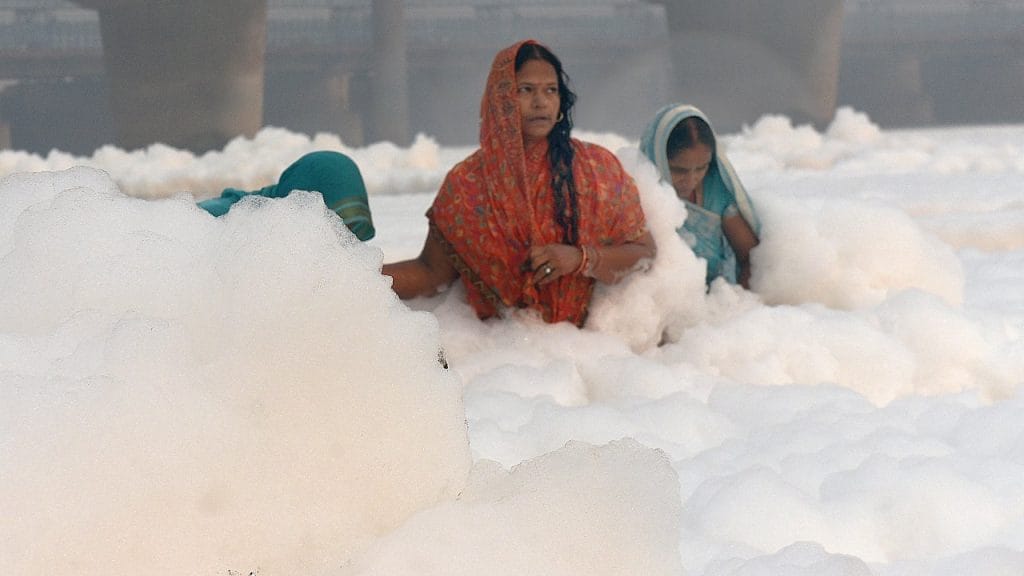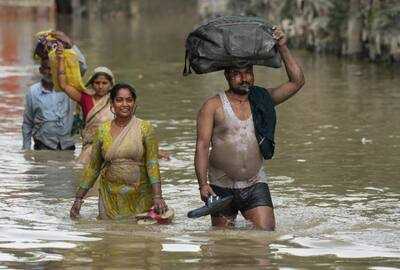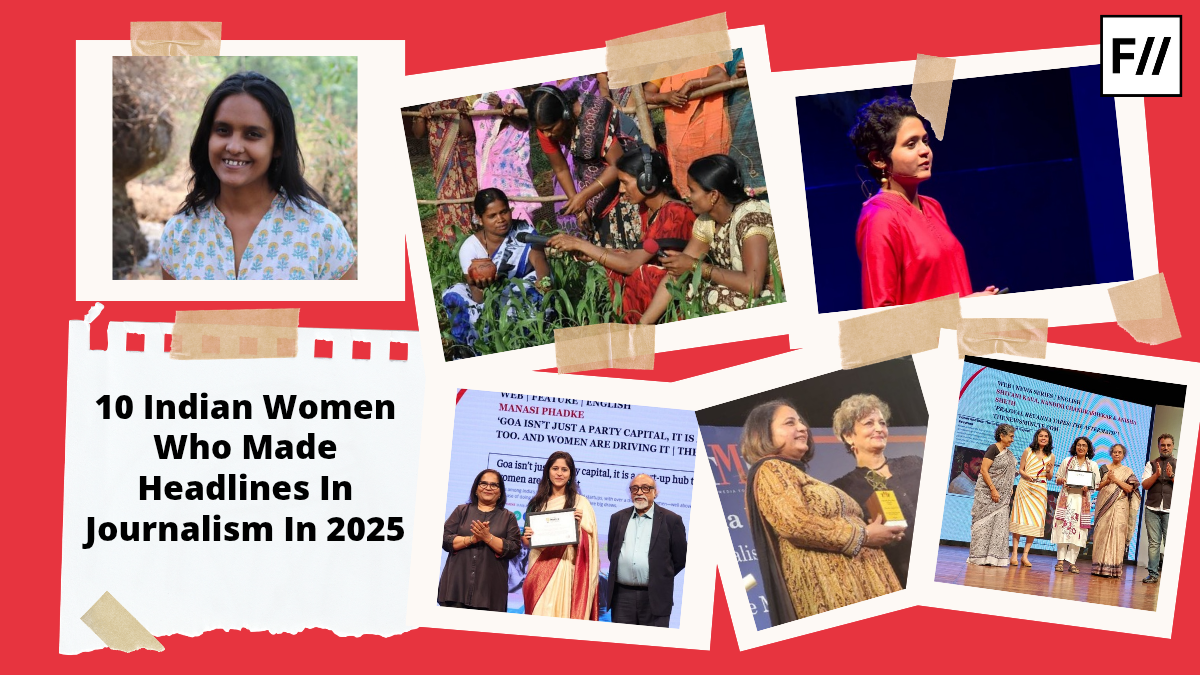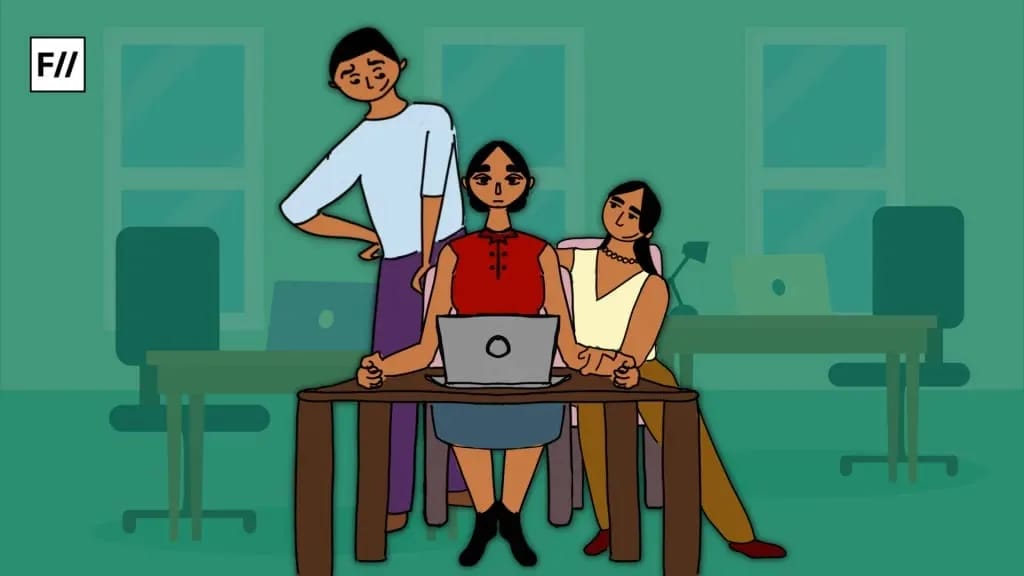Every monsoon, Delhi’s sprawling urban landscape is dramatically reshaped by waterlogging and flooding. Streets turn into canals, underpasses become reservoirs, and mobility grinds to a halt. For most residents, this period brings inconvenience and infrastructural strain—but for the city’s low-income and informal settlements, the monsoon often spells crisis. These neighborhoods, often situated in floodplains, drainage basins, or otherwise “undesirable“ ground, have insufficient drainage, solid waste management, and flood-resistant housing infrastructure. Consequently, they remain perennially worst-hit when thunderstorms inundate the city’s infrastructure.

These vulnerable communities have women experiencing multiple and gendered harms that are below the radar in public debate as well as city policy. Slum residents—dependent on public or community toilets—are denied access to proper sanitation during monsoons. Clogged toilets, polluted water sources, and the lack of safe facilities for personal hygiene adversely affect women’s health, mobility, and dignity.
Additionally, when flooding interferes with day-to-day routines, it is women who are made to adjust, absorb, and cope with the consequences. Unpaid care work is doubled in this season, for they are left to mop flooded houses, wash muddy clothes, cook on meager facilities, and take care of children and the sick—all in the process of enduring their own threats of water-borne illness.
Slum residents—dependent on public or community toilets—are denied access to proper sanitation during monsoons. Clogged toilets, polluted water sources, and the lack of safe facilities for personal hygiene adversely affect women’s health, mobility, and dignity.
A report by The Economic Times in 2024 highlighted how civic agencies in Delhi increased preparations to tackle waterlogging through machinery deployment and CCTV surveillance. Yet, while the technical fixes are imperative, they tend not to consider the socio-economic and gendered inequalities that frame individuals’ everyday experiences of urban flooding. Unless these deeper inequities are considered, the city’s most vulnerable—particularly women in informal settlements—will keep experiencing the monsoon not as a weather event, but as a seasonal emergency.
Sanitation: a daily struggle in monsoon
In many informal settlements, public toilets are scarce, and those that exist are often in disrepair. During floods, these facilities become unusable, forcing women to seek alternatives. A study by the Observer Research Foundation (ORF) highlights that women and girls are compelled to use precarious spaces for sanitation, exposing them to health risks and gender-based violence.
Urban flooding disproportionately affects women, especially those in informal settlements, due to challenges like compromised sanitation, increased caregiving responsibilities, and heightened exposure to health risks.
Surge in unpaid care responsibilities
Flooding disrupts daily life, and women tend to bear the responsibility of running the house during this time. They devote extra hours to cleaning, fetching water, and taking care of ill family members. This unpaid labor increases during monsoons, leaving little time for rest or income-generating activities.

The ORF study also emphasized that during heavy rains, women in low-lying slums often have to wait until nightfall to access outdoor spaces for defecation, risking their safety. Also, it is important to note that programs such as the Swachh Bharat Abhiyan (2014) have not benefited most of these slums. And where toilets are constructed, there’s usually no provision for managing menstrual hygiene—an urgent issue during the monsoons when water shortages and flooding overlap.
Health risks and water scarcity challenges
Floodwaters contaminate drinking water sources, leading to outbreaks of waterborne diseases. Women, being primary caregivers, are at the forefront of managing these health crises. Most household and community toilets are either submerged or damaged during floods, forcing women and girls to defecate in the open, which increases health risks.
A feminist urban planning policy is an imperative—one that keeps climate-resilient toilets functioning during floods, sees and redistributes unpaid care work through robust social protection systems, and truly engages women from marginalized groups in disaster planning and decision-making.
Women, being usually the major caregivers, are left to deal with medical emergencies, clean up flooded homes, and take care of children and older relatives who get sick. They are also more likely to be the most affected by the water crisis, as getting access to clean water rests squarely on their shoulders.
In multiple studies, women from Bawana and Bhalswa resettlement colonies, for instance, reported walking up to 2 kilometers to collect drinking water during floods—balancing heavy containers while navigating slippery, debris-laden paths. A report by the India Water Portal and a gender and essential services audit by Jagori and WICI document how poor water infrastructure and monsoon flooding severely constrain women’s access to safe and adequate water in these areas.
Civic authority inadequate interventions
Delhi’s civic bodies have begun ramping up flood preparedness. Ahead of the 2024 monsoon season, the New Delhi Municipal Council (NDMC) and Public Works Department (PWD) deployed super suction machines, desilting teams, and flood hotlines. CCTV cameras now monitor over 200 flood-prone spots, and the Delhi Disaster Management Authority has set up control rooms in each zone. According to a May 2024 report in The Economic Times, officials have also intensified monitoring and early response efforts in vulnerable areas, with teams on high alert for rapid deployment.

However, these reactions remain technocratic and gender-blind. Sanitation or shelter provisions in the majority of disaster preparedness plans are not distinct for women. Women are also underrepresented at the ward level and in the monsoon preparedness committees. Although agencies such as the Delhi Urban Shelter Improvement Board (DUSIB) operate night shelters, they are few that provide for women, and even fewer that provide facilities for women with children.
Delhi’s annual flooding crisis must be seen not merely as a municipal failure but as a pressing human rights and gender equity concern. Informal settlements—often excluded from formal service delivery—are feminized spaces where women live, work, and sustain households without adequate recognition in policy frameworks. In order to construct a truly resilient city, monsoon mitigation policies need to shift beyond the emergency deployment of pumps and tarpaulin sheet distribution.
A feminist urban planning policy is an imperative—one that keeps climate-resilient toilets functioning during floods, sees and redistributes unpaid care work through robust social protection systems, and truly engages women from marginalized groups in disaster planning and decision-making. If resilience is what is being pursued, equity has to be the approach.





I truly appreciate your technique of writing a blog. I added it to my bookmark site list and will